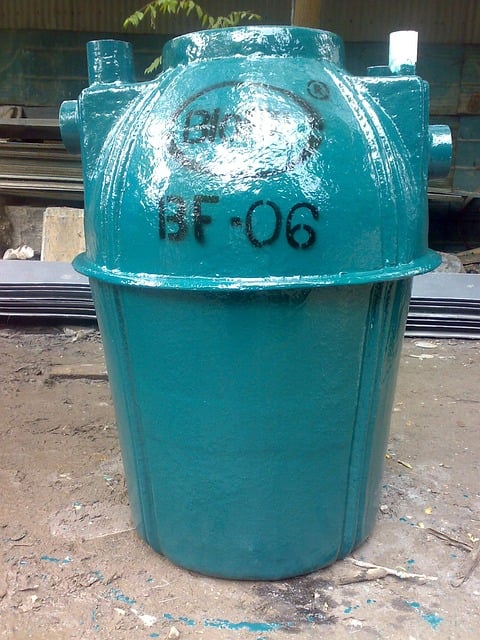A septic system is a self-contained wastewater treatment solution for areas without municipal sewage, comprising a septic tank, drain field, and soil. The tank holds and treats water through bacterial breakdown, while the drain field filters and further breaks down contaminants via soil filtration. Regular maintenance, including inspections, pumping, minimal water usage, and eco-friendly products, is crucial to prevent system failures, clogs, damage, and contaminated water sources. Annual professional inspections and routine cleaning every 3-5 years ensure optimal function and longevity of the drain field.
“Are you aware of the subtle signs indicating potential problems with your septic system’s drain field? Neglecting these signals can lead to costly repairs and environmental hazards. This comprehensive guide aims to empower homeowners with knowledge about their septic system’s critical components and common issues.
We’ll explore how to identify drain field problems early, ensuring optimal performance through preventive maintenance practices. By understanding these aspects, you’ll be equipped to maintain a healthy septic system and avoid potential crises.”
- Understanding Your Septic System: Key Components and Their Functions
- Common Drain Field Issues: Signs to Watch Out For
- Preventive Maintenance: Steps to Keep Your Septic System Running Smoothly
Understanding Your Septic System: Key Components and Their Functions

A septic system is a complex network designed to treat and dispose of wastewater from homes and businesses that don’t have direct access to municipal sewage lines. Comprising several key components, each plays a vital role in ensuring effective waste management. The primary elements include the septic tank, drain field (or leach field), and the surrounding soil.
The septic tank acts as a holding chamber, where beneficial bacteria break down organic matter from incoming wastewater. This natural process converts solid waste into liquid effluent. Subsequently, the partially treated effluent flows out of the tank into the drain field. The drain field is crucial for further treatment; here, the effluent seeps into the soil, allowing any remaining solids to settle out and bacteria to continue breaking down contaminants. Regular maintenance, including routine inspections and pumping of the septic tank, is essential to keep this system functioning optimally, thus preventing potential issues like clogs, tank damage, or contaminated water sources.
Common Drain Field Issues: Signs to Watch Out For

Drain fields, an integral part of septic systems, are often overlooked until problems arise. Common issues include clogging, root intrusion, and bacterial imbalances, which can lead to system failure if left unaddressed. One of the earliest signs is a noticeable change in drainage—if you observe that water is standing or backing up in your drain field, it could indicate a clog or damage. Overgrown vegetation is another red flag; roots from nearby trees or shrubs can infiltrate and disrupt the delicate balance of the drain field.
Regular inspections should also look for signs of moisture or bad odors, which might suggest bacterial leakage. Septic system maintenance includes staying vigilant about these indicators and scheduling professional assessments to ensure your drain field remains functional. Prompt action on these signs can prevent more severe and costly problems down the line.
Preventive Maintenance: Steps to Keep Your Septic System Running Smoothly

Regular septic system maintenance is key to preventing costly repairs and ensuring your septic tank functions optimally. Start by scheduling annual inspections with a professional to assess the overall health of your system. During these visits, experts can check for any signs of damage or wear and tear on components like pipes, pumps, and valves.
Additionally, implement routine cleaning and pumping every 3-5 years, depending on usage. This involves removing accumulated solids from the tank and drain field to maintain proper water flow and prevent clogs. Other preventive measures include avoiding excessive water usage, using eco-friendly detergents, and ensuring all household appliances are in good working condition to minimize waste disposal issues.
Regular septic system maintenance is key to preventing costly drain field problems. By understanding your system’s components and watching for signs of distress, such as clogs, odours, or pooling water, you can catch issues early. Implementing preventive measures like regular pumping, cleaning, and inspections will ensure your septic system continues to function efficiently, protecting both your investment and the environment. Embrace proactive septic system maintenance for a healthier, more sustainable future.
